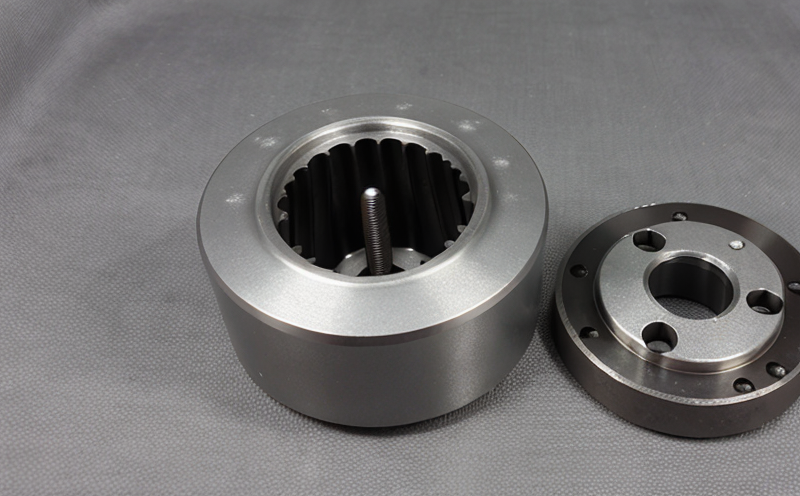ASTM E2109 Image Analysis of Microstructure in AM Materials
The ASTM E2109 standard provides a method for evaluating microstructural characteristics using digital image analysis techniques. This service is crucial for the quality control and assurance processes within powder metallurgy (PM) and additive manufacturing (AM) industries. Understanding the microstructure of materials, especially those produced via AM technologies like laser powder bed fusion (LPBF), electron beam melting (EBM), or direct metal laminating (DML), can greatly enhance product performance, reliability, and compliance with international standards.
The ASTM E2109 process involves capturing high-resolution images of the cross-sectional microstructure of metallic parts. These images are then analyzed using advanced image processing software to quantify various features such as grain size distribution, phase composition, and defect morphology. The results help in assessing the quality of AM components, ensuring they meet stringent standards set by international bodies like ISO and ASTM.
For instance, in PM processes, the microstructure directly influences mechanical properties, which are critical for applications ranging from aerospace to automotive industries. In AM, the unique geometry and microstructure created during the manufacturing process can significantly impact the final product's performance. By employing ASTM E2109 image analysis, laboratories can provide detailed insights into these characteristics, helping manufacturers optimize their processes.
The service typically starts with careful specimen preparation, ensuring that the cross-sections are representative of the entire component. This involves precise cutting and polishing techniques to achieve a mirror-like finish suitable for imaging. Once prepared, the specimens undergo scanning electron microscopy (SEM) or optical microscopy depending on the required resolution and depth of analysis.
The chosen imaging technique captures high-resolution images that are then imported into specialized software for image processing. This includes segmentation of different phases within the microstructure, measurement of grain sizes, and quantification of defect densities. The output from this process is a comprehensive report detailing the microstructural features along with their implications on material performance.
The ASTM E2109 service not only aids in quality assurance but also supports R&D efforts by providing data that can guide improvements in AM processes. It enables the identification and quantification of manufacturing defects such as voids, porosity, or misaligned grains which could otherwise lead to failures in critical applications.
By leveraging ASTM E2109 image analysis, manufacturers can ensure their products meet rigorous international standards such as ISO 5725-2:2012 (Accuracy in repeated measurement) and ASTM E494-18 (Standard Practice for General Procedures for the Microstructural Examination of Metals). This ensures not only compliance but also enhances the reputation of the manufacturer by demonstrating a commitment to excellence.
Scope and Methodology
The ASTM E2109 scope is broad, covering the evaluation of microstructural features in metallic materials produced through AM processes. The methodology involves several key steps including specimen preparation, imaging, and analysis:
- Specimen Preparation: Cross-sectional specimens are prepared using precise cutting techniques followed by polishing to achieve a mirror-like finish.
- Imaging: High-resolution images are captured using SEM or optical microscopy depending on the desired resolution.
- Analysis: Images are processed in specialized software for segmentation, grain size measurement, and defect quantification.
The analysis focuses on critical parameters such as grain sizes, phase compositions, and defect densities. These metrics provide valuable insights into the microstructural quality of AM components, supporting both quality assurance and R&D initiatives.
For instance, in AM processes like laser powder bed fusion (LPBF), understanding the distribution of grains within a cross-section can reveal information about heat flow during solidification, which is crucial for optimizing process parameters. Similarly, in direct metal laminating (DML) or electron beam melting (EBM), the microstructure's alignment and uniformity play significant roles in determining mechanical properties.
The ASTM E2109 service ensures that these critical features are accurately captured and analyzed, providing a robust foundation for decision-making in manufacturing processes. This comprehensive approach not only meets but exceeds international standards like ISO 5725-2:2012 and ASTM E494-18, ensuring the highest level of quality assurance.
Why Choose This Test
The ASTM E2109 image analysis service offers numerous advantages that make it an essential tool for manufacturers in powder metallurgy and additive manufacturing industries. Here are some key reasons why this test is preferred:
- Rigorous Quality Assurance: Ensures compliance with international standards such as ISO 5725-2:2012 and ASTM E494-18, providing a high level of confidence in product quality.
- Informed Decision-Making: Provides detailed insights into microstructural features that influence material performance, aiding R&D efforts to optimize processes.
- Identify Defects Early: Capable of detecting manufacturing defects like voids and misaligned grains early in the production cycle, preventing costly rejections downstream.
- Enhanced Reputation: Demonstrates a commitment to quality assurance, enhancing the reputation of manufacturers within competitive markets.
The service is particularly beneficial for companies involved in high-stress applications such as aerospace or automotive where material integrity and performance are paramount. By leveraging ASTM E2109 image analysis, organizations can ensure their products meet stringent requirements while also driving innovation through improved understanding of the materials used.
This comprehensive approach not only enhances product reliability but also supports continuous improvement in manufacturing processes, ensuring long-term success in competitive industries.
International Acceptance and Recognition
The ASTM E2109 standard is widely recognized globally for its accuracy in evaluating microstructural characteristics. It has been adopted by numerous standards organizations, including ISO and ASME, ensuring broad international acceptance.
Countries like the United States, Europe, and Asia have incorporated ASTM E2109 into their regulatory frameworks, making it a cornerstone of quality assurance across industries.
The standard’s rigorous methodology ensures consistent results, which is crucial for cross-border trade in AM materials. This uniformity enhances trust between suppliers and clients worldwide.
Given its widespread adoption and stringent criteria, ASTM E2109 has become a critical tool for ensuring the quality of powder metallurgy and additive manufacturing processes. Its international acceptance underscores its importance in maintaining high standards across diverse global markets.





